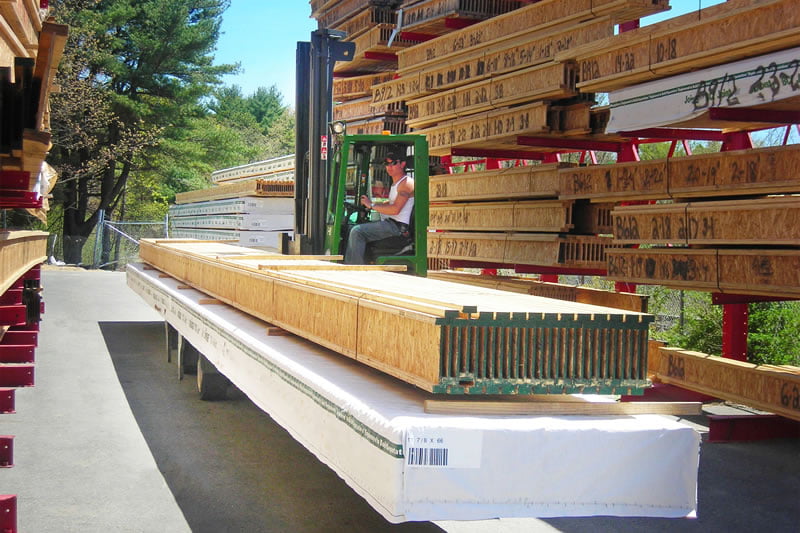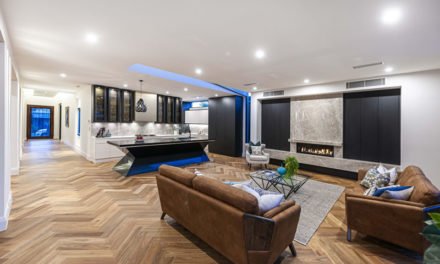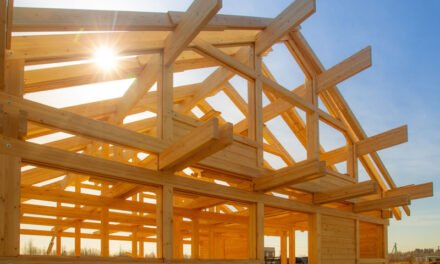We’re about to see strong growth in areas like social housing. Combilift’s Chris Littlewood shows us how his company is helping fabricators reap the benefits of these changes.
Bear with me for a moment while we talk public policy before we talk fabricating. Social housing has emerged as the surprise favourite in the post-Covid recovery stakes. An affordable, immediately achievable concept that’s very much needed in Australia’s high-cost housing and rental market. It creates lots of construction and support jobs quickly and delivers infrastructure that solves several pressing needs. Yet in the UK and similar European nations, about 1 in 6 people live in social housing; here it’s fewer than 1 in 20.
For some years, housing and welfare advocates around the country have been pushing for more social housing (a general term that includes public housing, affordable housing and build to rent properties). In recent times, they’ve been joined by leading unions, the Master Builders Association, Industry Super Australia and more to form the National Affordable Housing Alliance, and their work seems to be paying off.
Victoria’s recent state budget injected $5.3 billion over four years into social housing, NSW added $812 million across 2020-21, split across new buildings and upgrades to existing properties. It’s not an issue that breaks down party lines, either: social housing plans in Liberal South Australia are better organised and funded than those in Labor-held Queensland.
Suffice to say that this is going to be a big area in Australian construction for some years to come. Timber is well placed to gain a substantial slice of the work, especially with the prefabricated panelisation and modular building construction technologies that are also growing significantly now. But unlike the big EWP-centric panelisation jobs coming out of some of the Tier 1 developers and large truss firms, these are builds on a domestic scale where practically every firm that wants to will be able to bid for work.
We spoke with Combilift’s Australian manager, Chris Littlewood, about how he’s seeing the sector grow and the ways in which his company is helping fabricators and the timber industry make the transition.
Accelerated change
“Previously, Australia has been playing a bit of catch-up when it came to both prefabricated and modular construction,” says Littlewood.
Combilift has been working in both areas with their international customers and partners, as well as a few local companies for several years, but until 2020, the focus had been elsewhere in the Australian market. Then Covid hit, and a lot of pieces fell into place very quickly.
“For a start, it’s the ideal building style for our times,” Littlewood says. “In the Covid era, assembling buildings from prefabricated modules allows construction to occur within a very controlled environment. It allows for organisations to take on greater automation and improved quality management – and there are fewer variables that can affect the construction process as well.”
With panels or modules being built inside fabrication plants rather than on a building site, there can be complete control over the number of people on site and how they cross over, limiting the risk to the fabricating and build teams. There are no weather delays, the environment is quality controlled and you can schedule trades precisely.
“While there are some very large firms who are involved in prefabrication and modular construction, it’s actually being driven by small to medium enterprises who are looking to increase productivity and efficiency within their businesses,” says Littlewood, pointing to the proliferation of cassette and panel fabricators.
“And it’s not just F&T manufacturers, it’s people who are developing complete wall panels or complete sections of housing. They may only have a small- to medium-sized warehouse and manufacturing facility, but what they’re looking to do – and what Covid to an extent has forced them to do – is to redesign how they’re manufacturing and how they’re taking their product to site.”
This rapid change has been facilitated by a number of Federal and State stimulus initiatives, particularly the Instant Asset Write-Off. “Grants like this and the government tax incentives have given people the courage and the means to undertake large-scale changes of their businesses,” Littlewood says.
While this investment in capital equipment, including lifting equipment, has been significant in helping this sudden acceleration of business development, Littlewood points out that government incentives need to centre around industry more broadly, with an emphasis on housing. “It really is about investing in those industries that will help these businesses to thrive regardless of any stimulus,” he says.
“It’s helping businesses to think outside the box and drive productivity and long-term profitability. Before, while there was a latent interest around modular building within the timber framing industry, perhaps there wasn’t the drive to really dive in. I think that’s going to be a lasting change that comes out of 2020: a lot of organisations have seen an opportunity and are now diving in head-first into that space.”
Quality of lift issues
While smaller elements such as cassettes and panels are more affordable for most plants to manufacture than entire modules, each unit still represents more of an investment than the standard truss.
“It’s then that things like lifting start to become more important,” Littlewood says.
“So much of the work is capital intensive, you’re putting a lot of your money and resources into the product on your site, so the chances of it being damaged by bad handling equipment or poor methodologies is higher. You’ve also got an opportunity to increase the throughput of the facility and increase the space utilisation within the facility, both indoors and out, with good lifting equipment, whether that be a conventional forklift, a multi-directional forklift or something like a straddle carrier or a mobile gantry. That’s what we’re starting to see with a lot of medium-sized fabricators.”
The goal is to reduce handling of loads and to make every move in the most efficient way possible, with the least amount of potential damage. Some of this comes down to site design (see Design partners, below), and the rest to machinery choices and operation.
Littlewood explains: “If you have a multidirectional forklift, for example, you’re not restricted in how it can move a load. Instead of being constrained to certain paths or requiring some lifts be done at height to go over plant or workstations, it can move loads laterally in a way where they won’t come into contact with other equipment, be that mobile or stationary plant, within your facility. It dramatically lowers the chance of you damaging the product, especially in common accidents like contact with doorways. With a conventional forklift, you often have to push and pull and navigate around a doorway, whereas with a Combilift Multidirectional, you’re going straight through. That minimises your risk immensely.”
For larger loads, a range of straddle carriers and mobile gantries are available.
“The straddle carriers, for example, range from 20 to 125 tonnes,” says Littlewood. “They’re all designed for indoor or outdoor operation as well as being able to move any segments of a modular building within a manufacturing area. Depending on what the customer needs, we can do them from three wheels right through to eight wheels depending on the ground conditions and what lift capacity is required.”
Straddle carriers and mobile gantries are particularly useful in helping businesses manage their storage and traffic flow. This includes working with custom storage solutions to lift pods and containers on and off trucks or into pre-staging areas at the manufacturing plant, as well as loading frames and trusses onto, or taking a full load of timber off, a truck in a single lift. It even includes positioning entire housing modules – both in the fabricator’s yard and on building sites.
“We can build to any dimensions required,” Littlewood says. “And that’s as true of adapting forklifts to work with pod systems or long EWP as it is of constructing over-sized straddle carriers and mobile gantries for modular building sites. A few years ago we created an eight-wheel straddle carrier for Civmec Construction. They wanted a straddle carrier that could lift 80-90T of prefab modular prison cells for the new Grafton Correctional Centre.
“So Combilift designed and built a very customised piece of lifting equipment to allow Civmec to lift and to place in situ the different modular elements required on the build site in Grafton. Each component was roughly 80T and included all the services within the module – electrical, plumbing, whatever was required.”
Design partners
One core, but often confronting, part of redesigning a manufacturing process is redesigning the physical plant. Combilift now offers a warehouse planning service that can help increase your storage capacity as well as minimise safety risks and movement within your process.
“It’s a service that grew out of us optimising what could be done through lifting,” Littlewood says. “We realised that we could show people how to get the most out of their space and perhaps help them to buy or stay in a smaller site, but get more use out of it.”
Combilift offers planning assistance for those starting up a new company, those restructuring and those wanting to refine existing systems with better solutions.
“If you’re starting a new enterprise, it’s worth calling prior to you actually deciding on your site,” says Littlewood. “If you come to us and say, ‘This is what I want to do, what is the minimum footprint with which I can achieve that?’ then we can do a layout for you. Or, if you have a proposed site, we can help you utilise that space in the most effective, productive way to improve workflow, from putting the machines in the right place, to door access, to external layouts, to the way that the trucks will move on your site.”
Customised ‘flat racking’ systems such as pods and other large-scale horizontal racking options are becoming popular, in some cases because they allow for swift changes in what’s being loaded onto a truck when site problems occur, in others because they’ve been the only solution to lifting issues. “In the modular construction space, we start at 2.5T and a lot of the equipment that we’re getting requests for now is in the area of 12-16T.” Littlewood says. “So if your pre-staging is using a pod or horizontal racking system because it fills other needs, our machines can be designed specifically to work with that system. But our lifting equipment also allows that full load to be lifted and put immediately onto the back of a truck without the need for a pod or rack. So we can take away the need for extra equipment where possible and improve the efficiencies within an organisation.”
The major focus at Combilift has been around site safety, particularly removing any need to travel with loads at height. “It’s a clear risk we can remove,” Littlewood says. “In the same way, using straddle carriers or pods helps organisations to manage their loads at ground level, which removes the safety concern of having people on the back of trucks. A lot of this gear is long, heavy and wide, so it’s about choosing the right equipment to make sure that the machinery your operator is using is as stable as possible. And managing out risk ends up becoming another business efficiency, because accidents are a major cost.”
Future growth
Like most of us, Littlewood is glad to see the end of 2020, but is optimistic about the industry in the near future, pointing to the surprising growth in both enquiries and sales he’s seen from most states this year. “Even from post-lockdown Victoria, the level of inquiry coming now is very strong,” he says.
“We’ve got a good cohort of organisations in Australia who are already using our equipment in the prefabrication/modular industry, including Meyer Timber, Tilling and Speedpanel. And they’re great advocates of our equipment in our industry. Our real concern now is growing the sector itself so that we can lift up the opportunities available to our customers and help keep them and the broader timber industry on the forefoot when it comes to these opportunities.”
Training and skills remain something of a sticking point, with skilled workers already in high demand. Combilift’s response has been to work in partnership with schools and technical education institutions, as well as using its own people globally.
”I’ve seen it in both our own company and in our customers’,” says Littlewood. “We’ll bring in people from Europe or Asia or Africa: people with skill sets that are different but complementary to what Australia needs to drive productivity. And because we come at things from a different angle, we learn from each other. We supply equipment into over 85 countries around the world, yet when we bring technicians over here for training of local staff, they go back to Europe with new ideas which they use to improve the equipment that we’re providing to industry. Because in Australia, they see what we need to do to deal with our extraordinary climate and conditions.”
The other thing buoying Littlewood’s spirits is the growth in Combilift’s electric range, which goes from smaller walk-behind trucks all the way up to 12T lift capacities.
“A lot of F&T organisations are starting to be self-sufficient in energy,” he says, “so we’re seeing greater demand for our electric range. Globally we’ve seen real growth in electric – but in Australia it’s really picking up demand now. Our multidirectional CB range, which starts at 2.5T, now comes in up to 4.5T in electric, but we’re now also doing our C-series range, that’s our platformed truck with the panographic reach – very popular in the F&T industry– right up to 12T.
“It’s been a strange year in that we haven’t been able to promote these developments at trade shows, but I made a list of things we’ve achieved this year and these are a great win. The industry’s been asking for them for quite a while and now we’re delivering. The level of enquiry and sales for electric eclipses anything we’ve done before. This is really going ahead in leaps and bounds. The next year is going to see us offer even more in terms of alternative technologies.”
For more, visit www.combilift.com/au/












